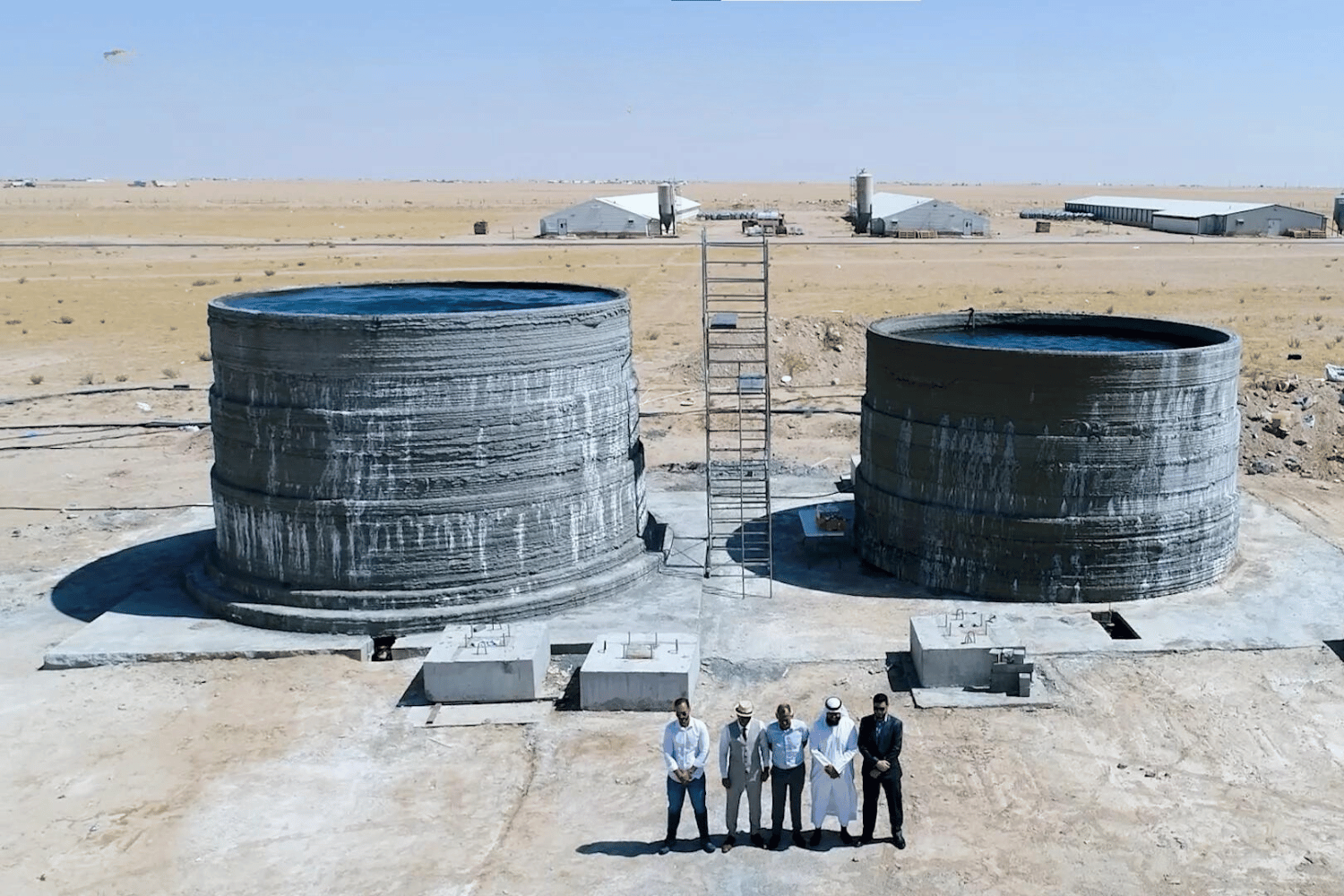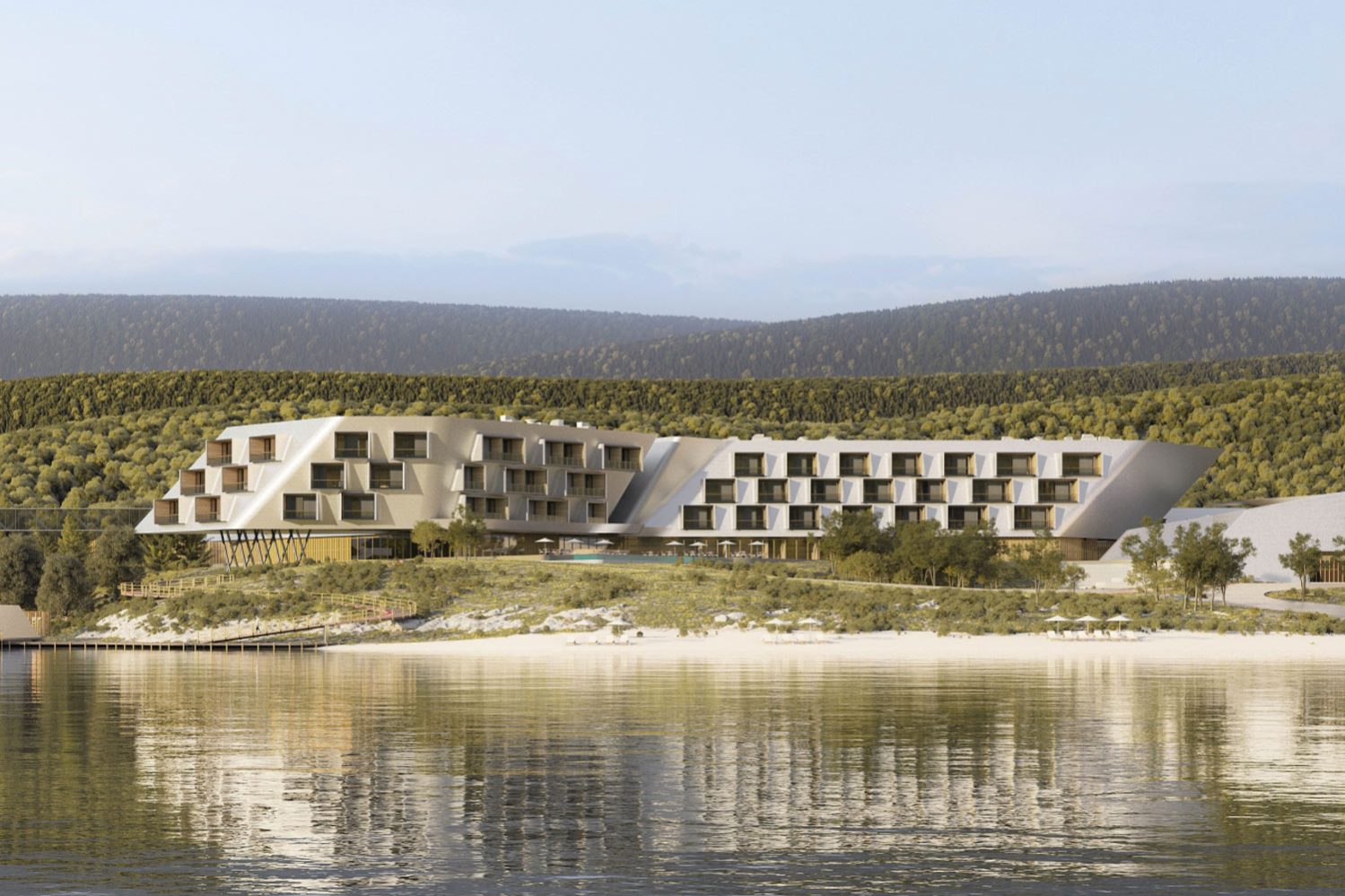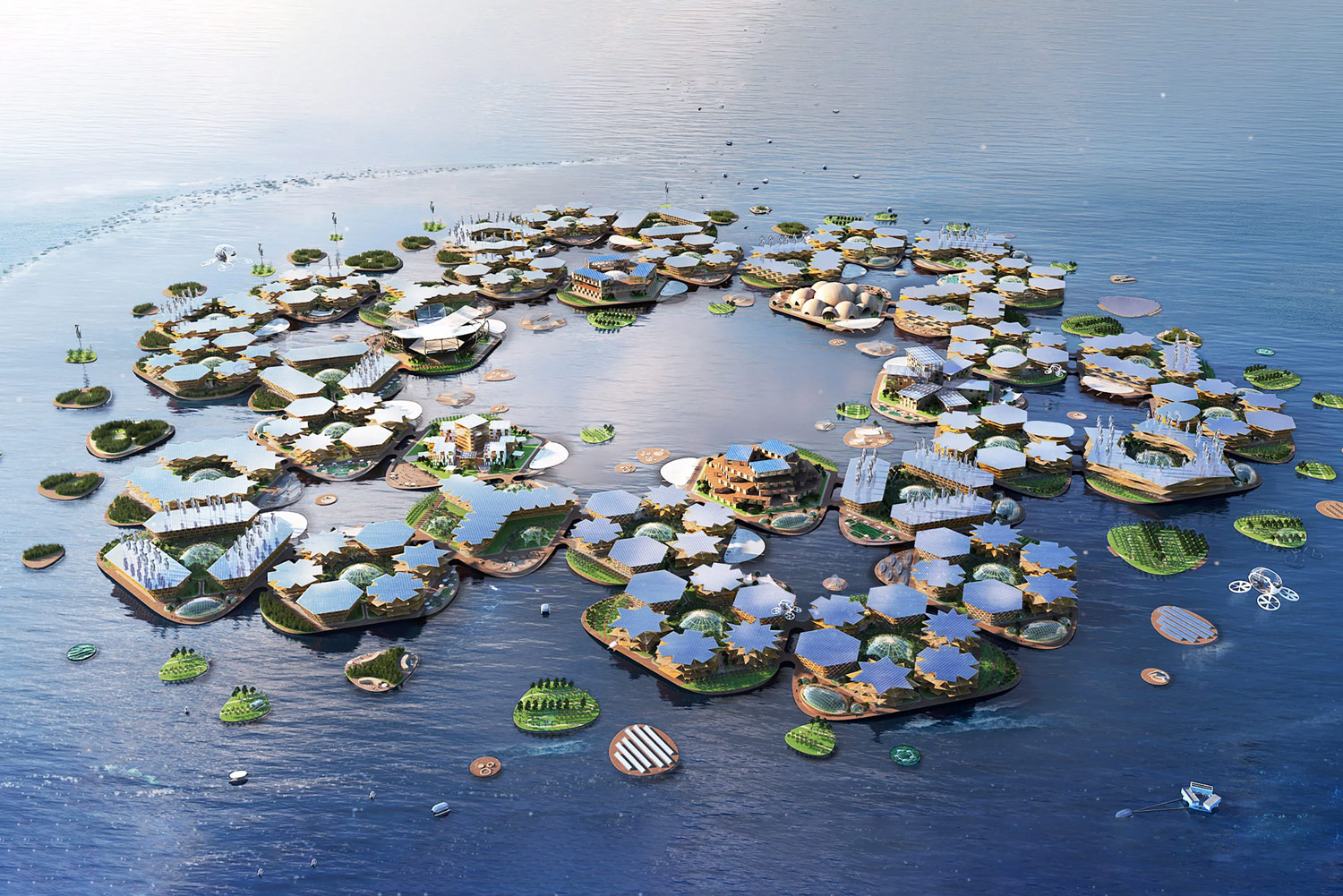
Abyan constructed the world’s first on-site 3D-printed large water tanks for chicken drinking water in Kuwait using a COBOD 3D construction printer. The tanks reach 4.5 meters in height and have a diameter of 7 meters. They are built in 5 days with macro fibers to reinforce the tank walls and no traditional reinforcement meshes.
COBOD printed the tanks with a low-cost, real C40/50 concrete mix on-site using the D.fab solution and related printing equipment invented by CEMEX and COBOD. 99% of all raw materials used are locally sourced. “3D construction printing does not have this limitation, allowing structural engineers to adjust the wall thickness where needed. Since gravity and water pressure make the bottom of the tank experience more stress, those areas need thicker walls. With 3D printing, the bottom walls can be thicker and the upper walls thinner, saving materials and making the construction of the tanks more economical and sustainable.” states COBOD.
Henrik Lund-Nielsen, Founder and General Manager of COBOD, said: “Abyan pursues real innovations, which we really want to support, and they wanted to try to avoid using any hard reinforcement in the walls, and just add fibers to the concrete. Of course, this challenged us a lot, but together with Cemex, the three of us were able to find a very good solution, which now can be replicated elsewhere in the future.”

The tank located in Kuwait had varying wall thicknesses, with the bottom part measuring 40cm, the middle part measuring 30cm, and the top part measuring 20cm. As a result, 25% less concrete and reinforcement was used for the walls than if the tank had been constructed with uniform 40cm walls throughout. A diagram has been provided for reference.
Dr. Ahmad Al-Nassem said, “It is in the DNA of Abyan to be innovative. Abyan is wholeheartedly committed to revolutionizing the construction industry at large by integrating cutting-edge 3D printing technology within concrete construction along with innovative solutions in design and construction materials, bringing forth a new era of efficiency and sustainability. So, when all of our calculations showed that with 0,95% macro fibers in the concrete, we could remove all hard reinforcement of the tank walls, we were keen to prove this new design concept with a real-life project.”







































